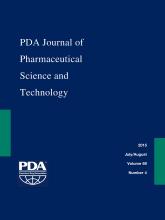Abstract
During the validation of an additional working cell bank derived from a validated master cell bank to support the commercial production continuum of a recombinant protein, we observed an unexpected chromosomal location of the gene of interest in some end-of-production cells. This event—identified by fluorescence in situ hybridization and multicolour chromosome painting as a reciprocal translocation involving a chromosome region containing the gene of interest with its integral coding and flanking sequences—was unique, occurred probably during or prior to multicolour chromosome painting establishment, and was transmitted to the descending generations. Cells bearing the translocation had a transient and process-independent selective advantage, which did not affect process performance and product quality. However, this first report of a translocation affecting the gene of interest location in Chinese Hamster Ovary cells used for producing a biotherapeutic indicates the importance of the demonstration of the integrity of the gene of interest in end-of-production cells.
LAY ABSTRACT: The expression of recombinant therapeutic proteins in mammalian cells depends on the establishment of a cell line with the gene of interest integrated in the host genome and stably expressed over time. Before being used for commercial production, cell lines are submitted to a qualification program in order to ensure their phenotypic and genotypic characteristics and the efficacy and safety of the product. During the production life cycle of a therapeutic protein, additional cells banks have to be validated after exhaustion of the current qualified cell bank in order to support the commercial production continuum of the recombinant protein. It is during the validation of an additional working cell bank derived from a validated master cell bank that we detected a different chromosome bearing the gene of interest in a portion of cells at the end of the upstream production phase. In our case, this event did not affect the process performance, the product quality, or its safety profile, but it highlights the need to characterize the integrity of the gene of interest in end-of-production cells when producing recombinant proteins for human use.
- © PDA, Inc. 2015
PDA members receive access to all articles published in the current year and previous volume year. Institutional subscribers received access to all content. Log in below to receive access to this article if you are either of these.
If you are neither or you are a PDA member trying to access an article outside of your membership license, then you must purchase access to this article (below). If you do not have a username or password for JPST, you will be required to create an account prior to purchasing.
Full issue PDFs are for PDA members only.
Note to pda.org users
The PDA and PDA bookstore websites (www.pda.org and www.pda.org/bookstore) are separate websites from the PDA JPST website. When you first join PDA, your initial UserID and Password are sent to HighWirePress to create your PDA JPST account. Subsequent UserrID and Password changes required at the PDA websites will not pass on to PDA JPST and vice versa. If you forget your PDA JPST UserID and/or Password, you can request help to retrieve UserID and reset Password below.






